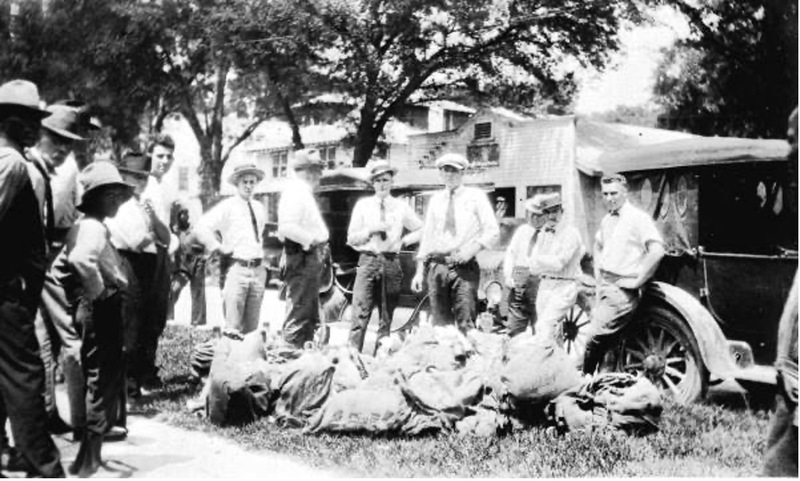
Most of us are aware of the era in which the production, transport and sale of alcoholic beverages were prohibited as of January 16, 1920. with passage of the Eighteenth Amendment to the U.S. Constitution. However, many people are unfamiliar with the role played by Ponce Inlet Lighthouse’s keepers during that time in assisting in the apprehension of so-called “Rum Runners,” who smuggled in rum and other forbidden beverages from nearby sources such as the Bahamas.
They were very inventive when it came to evading law enforcement, sometimes tying the cargo to sea buoys located at the inlet entrance for later pickup by other boats or concealing the bottles among their legal cargo or even underneath their vessels. Secluded inlets and bays along the Florida coast were perfect places for smugglers’ boats to land undetected, especially at Ponce Inlet (known as Mosquito Inlet until 1927), and thick undergrowth was also a benefit when escaping from law enforcement.
Ponce Park/Ponce De Leon Inlet Lighthouse c.1953
When people think of Ponce Inlet nowadays, they think of a law-abiding community (for the most part). However, during Prohibition (when it was a sleepy little village named Ponce Park), it at times resembled the Wild West! One example was a shootout between federal agents and rum runners late one night and into the early morning hours when law enforcement swooped down on two boats at Ponce Park.
According to an article from New Smyrna Daily News of May 2nd, 1924, one woman was wounded, five men arrested, 250 cases of liquor, a gasoline launch and five automobiles were confiscated in one of the most daring and largest raids on rum pirates of Volusia County. Whizzing bullets from high-powered rifles and revolvers, and scatter shot from shotguns flew in an effort by law enforcement officers to capture the smugglers. The woman, attempting to land cargo in a gasoline launch, was shot in the stomach in the crossfire, but the launch made a successful escape. The second launch was captured and taken as evidence. Women and men, in an effort to escape the melee, emerged from the underbrush with their clothes almost torn from their bodies, while engines roared and sirens screeched in a vain attempt to escape along the road. One well-known fisherman jumped overboard from the second launch and swam away, hiding under a mangrove bush for three hours before his arrest.
As Florida’s population increased, the Coast Guard encountered more and more problems in apprehending rum runners or bootleggers. They had the duty to protect the coasts, and the lighthouse keepers were pressed into service to keep a constant vigil and report any suspicious activity, day or night. From their vantage point high in the tower, keepers could monitor clandestine landings. Eventually the Lighthouse Service would grant an official commendation for meritorious service to Charles L. Sisson, keeper of the Mosquito Inlet Lighthouse Station from July 1924 until August 1926, who cooperated with the Coast Guard in keeping on the lookout for smugglers and providing assistance to personnel of the Coast Guard Cutter Yamacraw.
A rumor exists that someone had gifted a keeper with a bottle of illegal whiskey. However, the keeper was a teetotaler but a polite one. He did not wish to refuse a gift but had no wish to consume it or pass it on to someone else who might be corrupted by it. Instead, the story goes that he buried the bottle under the second assistant keeper’s dwelling, but it has yet to be found (and I’m sure many efforts have been made to do so)!